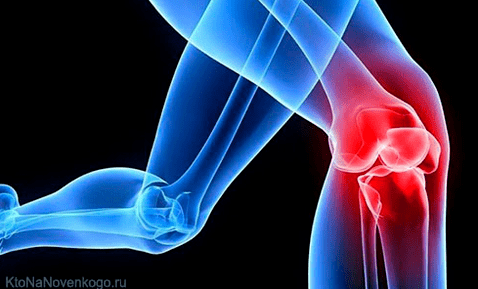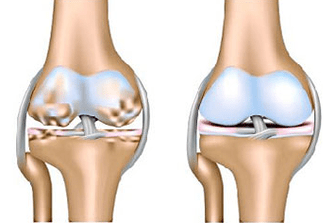Ancient Greek "arthrosis" is a joint disease ("Arthr"-joint, "-osis" -isa). It is also sometimes called osteoarthrosis or osteoarthrosis deformer (the ancient Greek "osteon" - bone).
It will be incorrect to call arthrosis as the disease - the name of an entire group of state that includes many diagnoses.
Any joint disease, regardless of the reason, can be called arthrosis, but it does not give anything to the doctor or the patient: the word "arthrosis" is not related to the cause of the disease or treatment, but only to certain symptoms.
The word "arthrosis" is very similar to another expression - "This is arthritis. " Both describe joint damage, often both of the joint pain, but with significant differences.
Arthritis is usually a disease that involves inflammation of the artificial: infection, hereditary or autoimmune diseases lead to the onset of arthritis. Its main manifestations include pain, color change, swelling in the inflamed joint.
In arthrosis, manifestations are less noticeable and the causes are completely different.
How the joint works (knees and others)
The muscle bone system needs a person for active movement in space. The bones are rigid frame, muscles - their driving power and joints - are the location of the mobile connection of the bones.
The structure of the joint is always two ends of the adjacent bones that can be compared to each other with the help of muscles and a small gap. This joint gap is full of special lubricant - synovial fluid. It is necessary for the nutrition of the cartilage: there is no pot, so it takes all the nutrients from Synovia.
The joint end of each bones is covered with cartilage to protect the bone tissue from friction. The cartilage also promotes "extinguishing" vibration and sharp mechanical load: for example, during walking, the joints of the knees and feet take most of the energy when blowing on the foot.
The restoration of these cartilage is a long and complex process that does not always end successfully.
All joints are limited by a capsule - a film that keeps articular fluid does not allow it to spread. Almost all joints are supported by leagues that do not allow adjacent bones to move too much and in the wrong direction.
Why and how the joints develop in the joints
There are many reasons for the beginning of arthrosis, in some cases a combination of factors, and sometimes it is impossible to determine the cause.
There are three main reasons and more than a dozen more. The most popular:
- joint injury;
- congenital joint disorders (dysplasia);
- The result of inflammation (arthritis);
- age (usually over 50 years);
- Violation of metabolism (trace elements), obesity;
- Excessive load on the joint.
The development of osteoarthritis is divided into three stages:
- Initial. There are no obvious signs, it's hard to find. The composition of the synovial fluid changes and its function deteriorates.
- Pain. Complaints and structural changes occur in the form of bone growth - osteophytes.
- Severe joint. Significant decrease in joint function is added: movements decrease or completely disappear; The joint is deformed and the appearance of the limb changes.
First of all, it is disturbed by the structure of the cartilage: it thickens due to the composition of the Synovia for any other reason. The swelling of the cartilage tissue worsens its food, so the cartilage becomes thinner over time.
Then, in the most common parts of the joint, the cartilage almost disappears or becomes too tight. In return, bone growth begins - osteophytes (bone "spikes).
At the end of the disease, bone growth can be pronounced so much that it limits movement to ankilosis - the total mobility of the joint.
Joint symptoms
Initial manifestations: periodic pain after significant physical activity. Then the morning stiffness is connected - after waking up for a few minutes (up to 30), the joint seems to be connected with a elastic bandage: the movements are possible but difficult.
Later symptoms:
- pain when palpation of the joint;
- Thickening of the bone in the joint;
- disability;
- increased pain during less significant physical activity;
- Deformation of the limb.
Arthrosis is the most common disease of the legs (knees, hips) and hands (shoulders). Foot joints are less common.
Degenerative processes in the joint can continue to occur in the form of unusual sounds during movement: crunching, crack, shock.
Diagnosis
As with any other disease, anamitesis begins with the history of the disease.
It is especially important for the doctor to find out that there are risk factors (injuries, arthritis, congenital errors, chronic diseases).
Further methods will be needed after the joint talk and checking: tests and instrumental examination.
The main study of diagnosis of arthrosis is radiography.
The image clearly sees the main changes in the joint: reducing the joint gap, growth of bones, deformation. In the initial stages, small osteophytes are visible on the edge of the joint, and the late uneven growth of the bone will be noticeably noticeable along the entire joint gap.
Ultrasound examination (ultrasound) is an additional method that helps determine the thickness of the cartilage in the earliest stages of arthrosis. Artroscopy is less common: the surgeon places a small camera directly into the joint and gets the cartilage image.
Treatment of joint treatment
It is impossible to fully cure arthrosis and return the joint to its original state. The correct combination of many methods only slows down the development of osteoarthritis, but the "return of former young people" will not work.
The main task of treating osteoarthrosis of the knee or hip joint is:
- Moderate physical activity (running, walking, sitting position);
- Special exercises, exercise therapy (physiotherapy exercises);
- diet;
- drug treatment;
- Surgery treatment.
With the arthrosis of the shoulder joint or other localization, the principles do not change, except for the correction of the cargo on the given joint.
In each case, physical activity and exercises are selected by a doctor at an orthopedic traumatologist. The diet usually involves the enrichment of the diet with unsaturated fatty acids, various proteins, and moderately limits carbohydrates (especially simple, these are "fast").
Rejection of bad habits (smoking, any amount of alcohol consumption) slows down joint development. The diet also depends on the cause of the disease and chronic diseases. You don't have to take dietary supplements.
Drug treatment - painkillers. NSAIDs -non -steroidal anti -inflammatory drugs are used more often. The appropriate choice depends on the presence of chronic diseases and the planned duration of the administration. Corticosteeroids (glucocorticoids, steroid drugs) are less commonly used.
Doctors very often prescribe chondroproprotectors - drugs containing important molecules for cartilage. In the vast majority of cases, such drugs do not affect the joint, especially tablet shapes and ointments.
It is extremely rare that such drugs can really need and have a real effect: when examining intra -articular fluid, you can check their quantities and directly injection into the joint (intra -articular injection).
Conclusions
Arthrosis is a degenerative joint disease associated with mechanical damage to cartilage and bone tissue growth. It usually develops in people over 50 years of age, after joint injuries or long -term overload.
Pain, morning stiffness and after crunching pain are manifested.
























